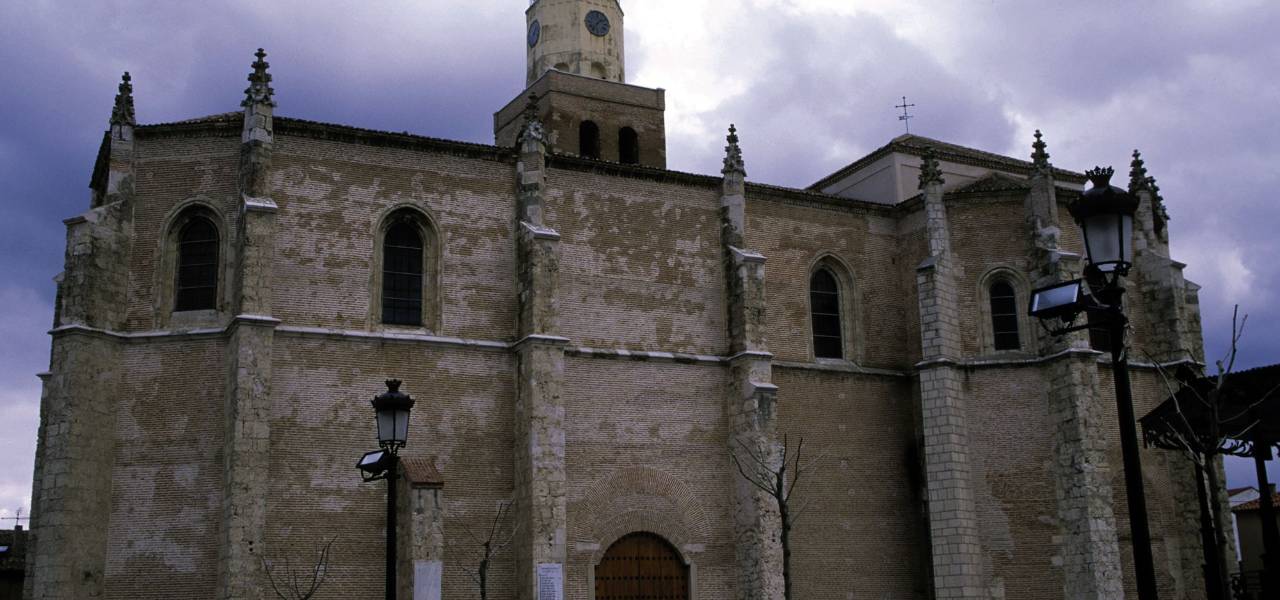By Mudejar ways
- Position
- Segovia province
- Type of route
- Weekend
- Web
- To know more
With its characteristic semi-circular arches and the use of fired clay, Mudejar is one of the principal architectural styles to be found in this region and Segovia in particular is home to many fine examples. The Mudejar style reached its golden age between the 13th and 16th centuries, as reflected in buildings such as the Church of San Justo in the capital and other temples to be seen in the province, such as the Monastery of Santa María la Real de Nieva and the Church of Nuestra Señora de la Asunción y San Sebastián / the Palace of Cardenal Espinosa de Martín Muñoz de las Posadas.
The striking use of brickwork can clearly be seen on this interesting route that takes visitors to the Parish Church of San Andrés en Montejo de Arévalo, the Church of San Cristóbal in San Cristóbal de la Vega or Coca Castle. In Cuéllar, visitors should take the time to visit the Mudejar Art Interpretation Centre, housed in the Church of San Martín.
What to see?
 Parish Church of PinarejosMore information
Parish Church of PinarejosMore informationTemple built with ashlar and masonry, has a single nave, from the XVII century, of rectangular floor, divided into four sections. It is covered with a semicircular barrel vault and is decorated with simple...
 Church of El SalvadorMore information
Church of El SalvadorMore informationThe original building was renovated in the XIII and XIV centuries when the nave was remolded, and, again, the header and the nave for the Gospel were redone in the XVI century. The church was built in...
 Church of San MartinMore information
Church of San MartinMore informationThis is one of Cuéllar’s most emblematic churches. It was built entirely in the Mudejar style in the 12th century using rough and smooth ashlar masonry, whilst the apse and façade are made of brick. Today...
 Medina del Campo SquareMore information
Medina del Campo SquareMore informationArchitectual design on different levels that evokes images of Italian plazas due to the elegant buildings.
 Arch of San BasilioMore information
Arch of San BasilioMore informationArch of XII century of the first walled enclosure, which was the northern exit of the city. It forms a small fortress flanked by an attached toned tower and a rectangular tower, and between them an allure...
 Church of San EstebanMore information
Church of San EstebanMore informationOf Romanesque-Mudejar style has a semicircular apse of brick. In the XVII century it underwent some reforms and an arcaded colonnade on a second nave joined the temple. From the ensemble it is worth noticing...
 Church of Santa Maria la MayorMore information
Church of Santa Maria la MayorMore informationMade of brick and stone, with a latin cross ground plan and groin vaults, stone ribs and triangular elements.Sepulchres of Fernando de Fonseca and Teresa de Ayala, by Doménico Francelli and Bartolomé Ordoñez...
 Church of San MartinMore information
Church of San MartinMore informationBuilt in the 12th century on the site of a former Mozarabic edifice of the 10th century. Three of its sides are surrounded by galleries resting on paired columns with sculpted capitals.The façade is decorated...
 Church of San Juan BautistaMore information
Church of San Juan BautistaMore information11th-century mixed Romanesque structure, with a single nave and a square apse. It has a square tower, built with masonry except the corners and the bell structure, which are made of stone blocks and the...




